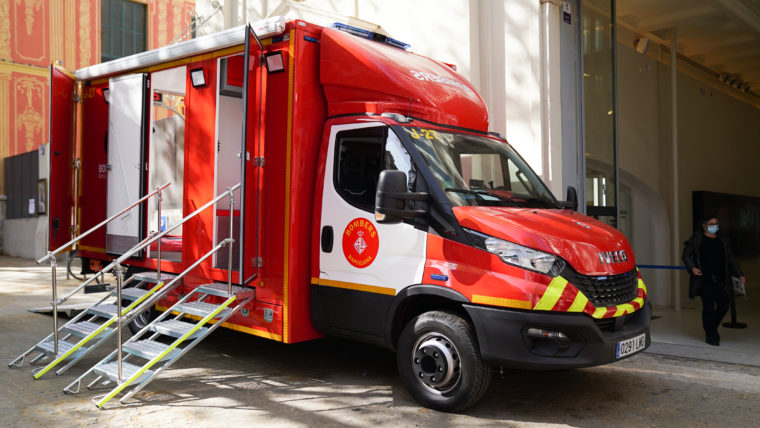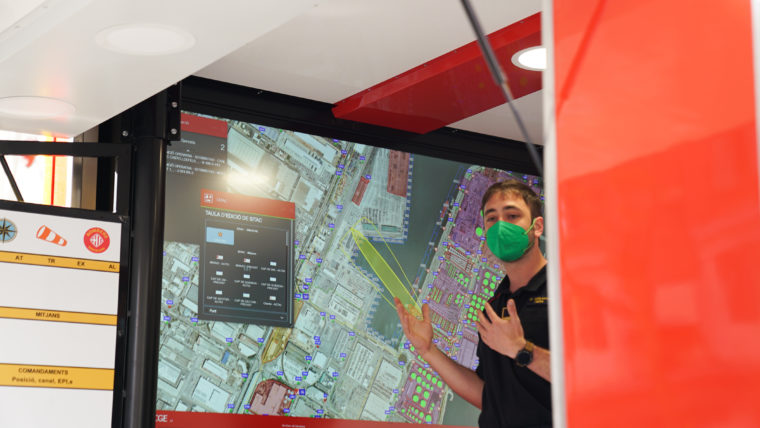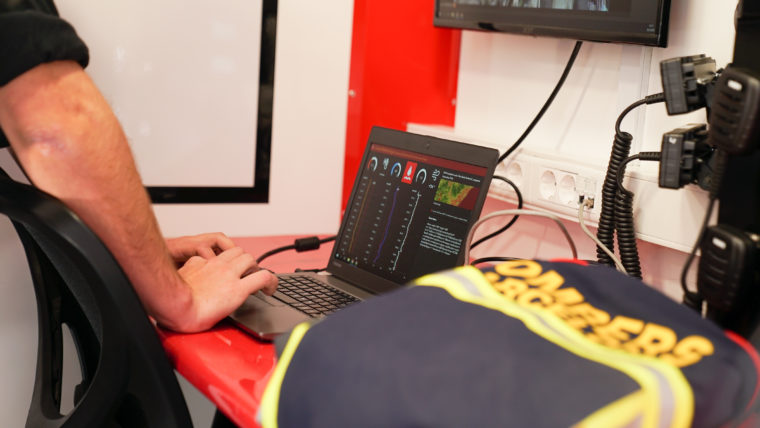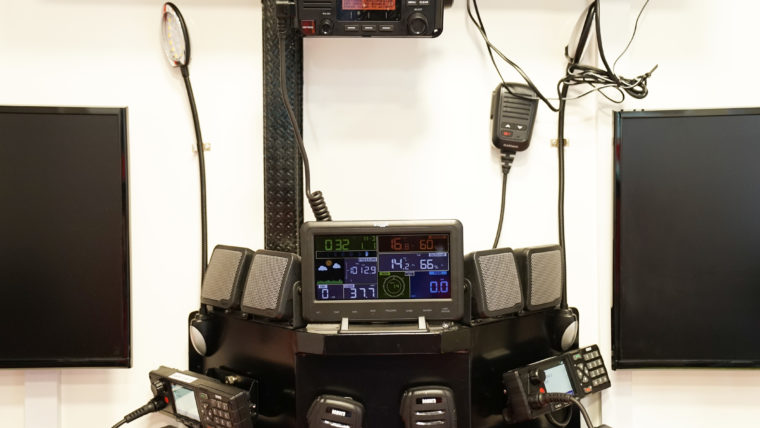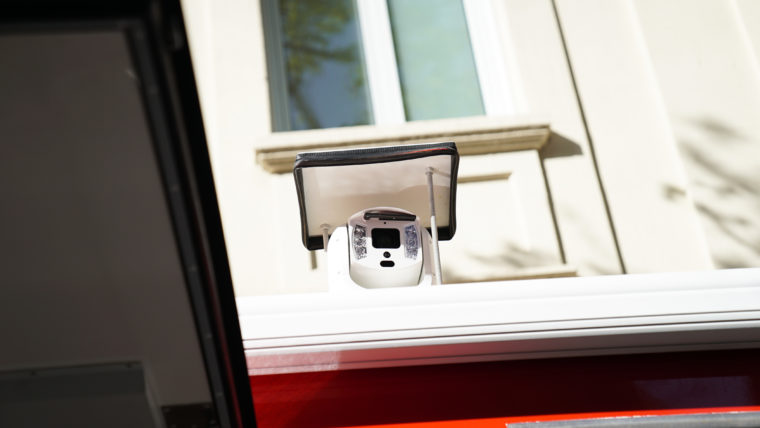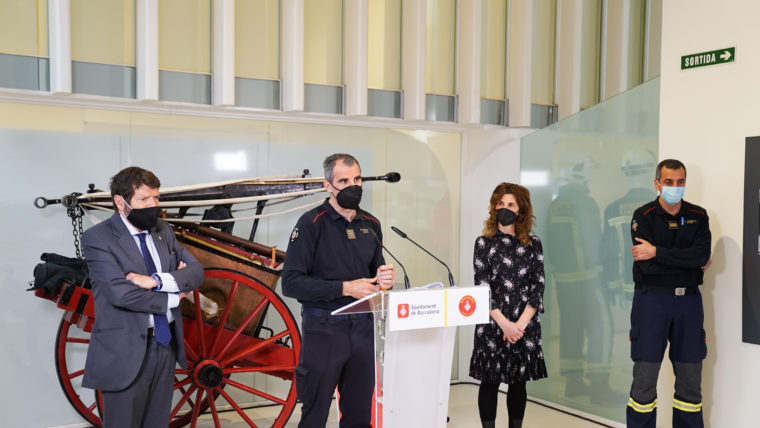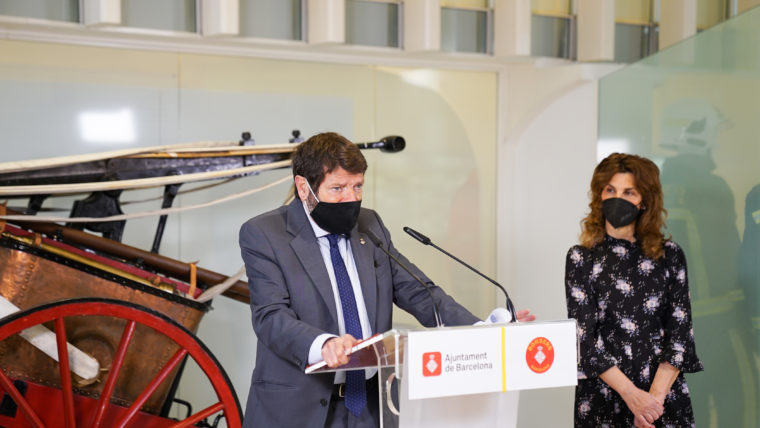Barcelona Fire Service improves its response capacity
Besides presenting four new vehicles, a balance was also offered today of the activity of the corps for the last year. Notable figures include over 18,000 callouts, the disinfection of 215 residential facilities and more than 5,000 PCR tests conducted during 2020.
Tasks carried out by the Barcelona Fire Service have become more varied, with the traditional concept of firefighters now encompassing much more. Besides fighting fires, the corps includes specialists in rescue and lifesaving, technological incidents, chemical leaks, event planning and more.
This broad scope of action also took on greater significance in 2020, with professionals from the Fire Extinction, Prevention and Rescue Service (SPEIS) helping to manage the Covid-19 pandemic.
Response to the health emergency
One of the main goals of the SPEIS last year was to keep enough staff available to tackle the health emergency. This was achieved thanks to a contingency plan which kept staff in reserve and established different strategies for disinfection and the design of duty shifts.
Specific safety procedures were drawn up to eliminate risks to staff involved in new tasks. Alternative spaces and satellite spaces were also established to be able to keep teams separate, minimising contract between groups on the same shift and those in reserve for other shifts.
At the same time, the SPEIS became part of various civil protection bodies at both a municipal and a national level. The service continues to form part of the technical action plan committee for PROCICAT, as well as the technical monitoring committee for municipal civil protection, CECOPAL.
Between the start of the pandemic and December, the Barcelona Fire Service carried out 141 rescue operations linked to Covid-19 and took part in all the projects under way in the city to tackle the health emergency, contributing with their organisational capacity and experience. These projects included:
- Pere Virgili Technical Office. This office oversaw procedures, protocols and the participation of municipal services in collaboration with the health ministry and the health consortium.
- Welfare-Residences Project. This project addressed the need to separate infected residents and clean and disinfect facilities. Firstly, infected people were separated from those with no symptoms. After this, or in parallel, all spaces were cleaned and disinfected with hydrogen peroxide. This service was provided in 215 cases. The service also conducted 4,728 PCR tests in 80 residences and advised on 241 contingency plans for residential facilities.
- Health Spaces Projects. The Fire Service provided staff to create a technical office for work in different areas: advice for establishments and medical staff in terms of conditioning spaces, healthcare materials, PPE and human resources; a new coordination centre to streamline hospital admissions, and the use of its own fleet of ambulances for health hotel transfers. These ambulances were also equipped with fire service workers, either on duty of from the reserves.
- Field Hospitals. In conjunction with other corps and organisations, projects were designed for converting facilities into field hospitals, as well as the drafting and implementation of their emergency plans. Daily operations helped install beds in these facilities, signage for the flow of people indoors and other support tasks. The service also carried out 333 PCR tests.
- Fira Barcelona Social Project. The work carried out by the fire service at the special accommodation facilities consisted of the technical project, in accordance with the programme of needs developed by the City Council’s Area for Social Rights, the direction and execution of work on the ground and the drafting and implementation of the emergency plans for these spaces.
Provision of service in 2020
The SPEIS acted in 18,498 instances in 2020, performing rescue tasks, attending to fires and explosions, technical issues and operational prevention measures. The figure represents a drop of 12% compared to 2019. Notable statistics here include:
-
- 3,788 callouts for fires and explosions, representing 20.5% of all services provided.
- 5,805 rescue procedures, representing 31.38% of all services provided. Nearly 87% of these types of service (5,049) were to assist or rescue people in homes.
- 5,649 assistance procedures, representing an increase of 13% compared to 2019.
The Emergency Handling Centre (CGE) dealt with 24, 550 cases where services were provided. Some 10% of these were resolved without the service having to be called out.
New vehicles for the Fire Service
Barcelona City Council continues to work to improve the resources available to the SPEIS. To this end, four new vehicles have been acquired to improve the management and quality of services.
-
- Advanced command centre vehicle. This vehicle will act as a command post for the service and be used for the coordination of emergencies on the ground with other agencies, strengthening tactical organisation during interventions. The vehicle has a spacious interior, enabling staff to remain isolated from the noise generated by major emergencies but at the same time opening up to the outside so that information needed to resolve the emergency can be shared. The vehicle features numerous tech devices, terrestrial and maritime transmitters, laptops, printing equipment, an 86-inch touchscreen, a surveillance camera, weather station and more.
- Logistics vehicle with three main missions: urgent transport of heavy materials for emergencies, quartermaster role at the required locations (distributions of drinks, energy foods, PPE logistics etc.) and as an enclosed changing room if needed. The vehicle has a lifting platform, an open-plan loading space of 4 m3 and a separate staff space with furniture and small electric appliances.
- Two heavy rural pumps for the mountain area.





